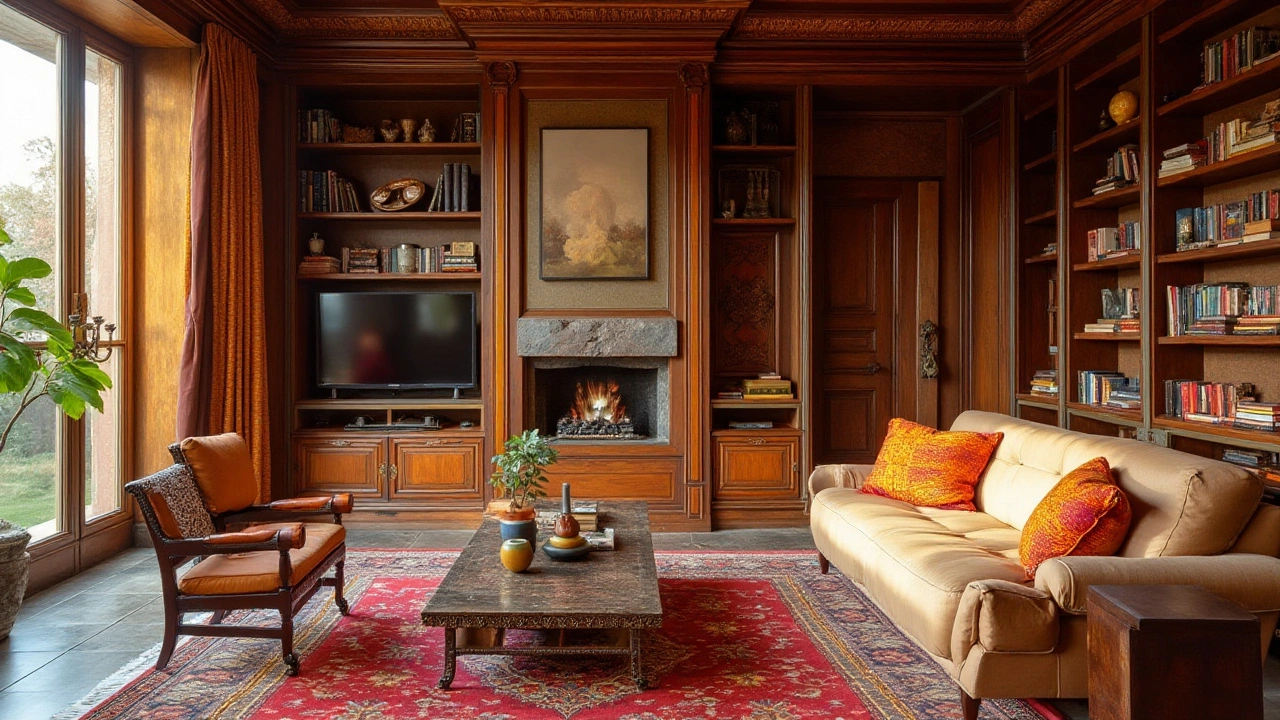Built‑In Furniture: Space‑Saving Ideas for Sofas, Storage & More
Ever feel like your living room is fighting for every square foot? Built‑in furniture is the shortcut many homeowners use to turn cramped rooms into sleek, functional spaces. Instead of adding a freestanding couch, console or bookshelf, you bolt or embed the piece right into the wall or a nook. The result feels custom, looks tidy, and often saves you money compared to buying a high‑end modular set.
One of the most common built‑in projects is a sofa that slides into a wall recess. This design hides the back of the couch, giving the illusion of a larger room. Measure the depth of your sofa, add a few inches for clearance, and frame a shallow alcove with sturdy studs. Finish the surrounding walls with the same paint or wallpaper as the rest of the room, and you’ll hardly notice a separate piece of furniture. The added benefit? You can hide power outlets, hidden storage, or even a small TV inside the same wall cavity.
Built‑In Storage That Looks Good
When you think storage, you probably picture bulky cabinets or freestanding shelves. Built‑in shelves, drawers, and cabinets can be placed above a coffee table, under a window seat, or flanking a TV. The key is to keep the depth consistent with surrounding trim so the whole wall reads as one unit. Use adjustable interior dividers to switch between books, board games, or folded blankets without re‑doing the whole install. If you’re worried about the look, add soft‑close hinges and sleek handles that blend with the wall finish.
Don’t forget the floor. A low built‑in platform can double as a seating area and a storage drawer. Slide out the top, stash blankets, magazines, or remote controls, then pull it back to sit. This works great in small apartments where floor space is at a premium. You’ll also love how the platform creates a defined zone without the visual clutter of a separate bench.
Built‑In Entertainment Centers
Many families struggle with the TV stand taking up too much room. A built‑in entertainment wall solves that by nesting the TV, soundbars, and game consoles into a single, flush‑mount unit. Plan for ventilation: leave gaps behind the electronics and use cable management clips that run inside the wall. You can also add a built‑in bookshelf on either side to display decor, keeping the whole setup cohesive.
If you love a cozy reading nook, consider a built‑in daybed or sofa that folds away when not in use. The daybed can sit under a window, with cushions stored in a hidden compartment beneath. It works as a lounge during the day and a guest bed at night without breaking the flow of the room. The built‑in approach means you don’t have to move heavy furniture around, and the look stays clean.
Before you start, jot down a quick list: what piece you want to embed, the dimensions of the space, and any utilities (like power or lighting) that need to run through the wall. A simple sketch helps the contractor understand your vision, and you can spot any clearance issues early. Most built‑in projects can be tackled in a weekend if you have basic carpentry skills, but don’t hesitate to bring in a pro for structural or electrical work.
Built‑in furniture isn’t just for ultra‑modern homes. Traditional rooms can get a fresh update by swapping a standalone cabinet for a built‑in that matches the crown molding and baseboards. The result feels tailored, and you’ll notice how much easier cleaning becomes when everything is flush with the wall.
Ready to turn your space into a sleek, roomy haven? Pick one piece—maybe a built‑in sofa or a storage wall—and start small. As you see the difference, you’ll likely find more opportunities to embed furniture and keep your home looking simple, stylish, and functional.
Do Built-In Bookcases Increase Your Home's Market Value?
Built-in bookcases not only add aesthetic beauty to a home, but they also contribute to its functional space. They provide more storage, enhance the interior design, and can potentially increase your property’s value. By blending seamlessly with a room's architecture, built-in bookcases create an impression of thoughtful planning and sophistication. This article explores how these features can turn a regular home into a captivating one while also boosting market appeal.





